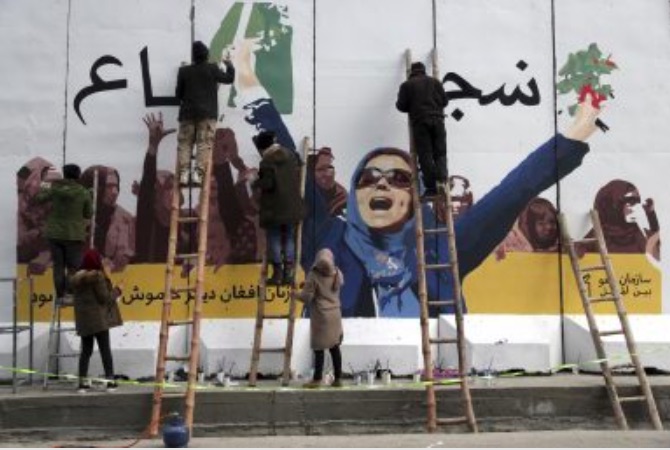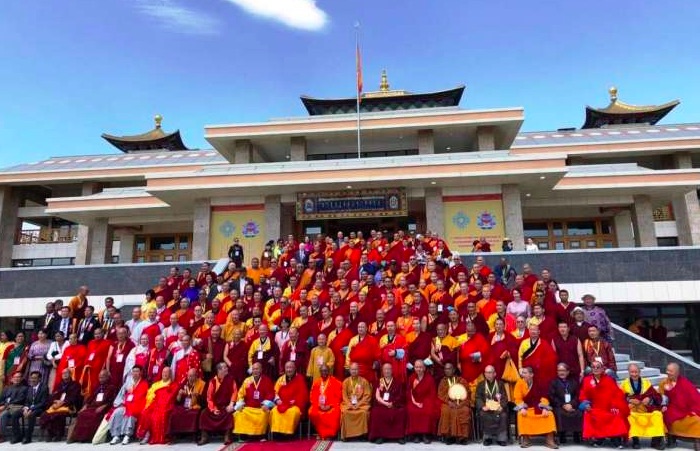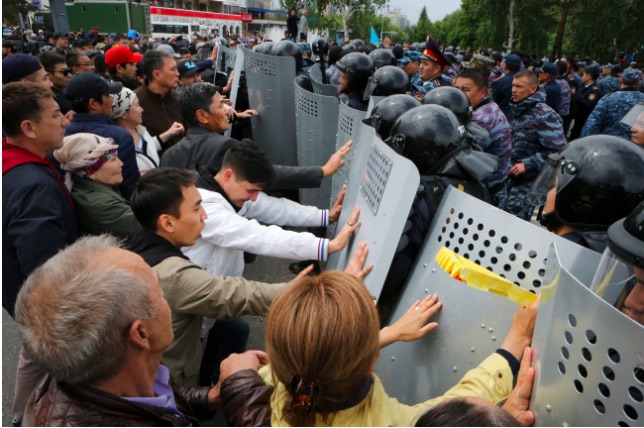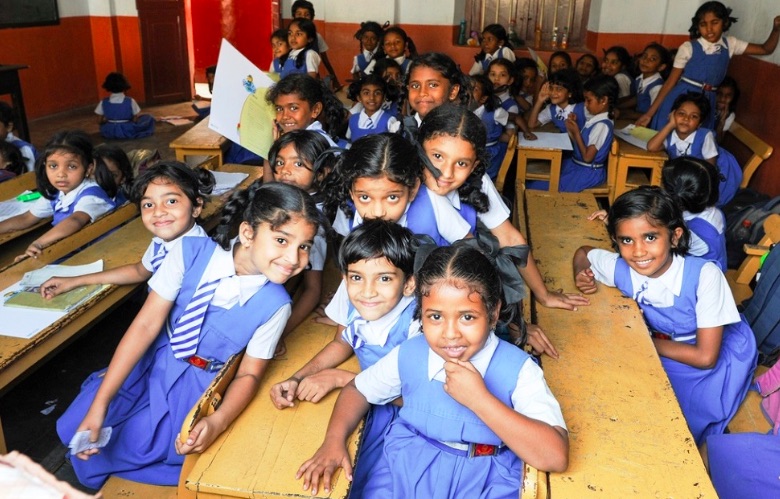. . WOMEN’S EQUALITY . .
An article by Ian J. Lynch in The Diplomat
Women are critical to the everyday peacebuilding activities necessary to put any peace agreement into effective practice.

Independent Afghan artists draw a graffiti on a barrier wall of the Ministry of Women’s Affairs to mark International Women’s Day in Kabul, Afghanistan, Friday, March 8, 2019.
Image Credit: AP Photo/Rahmat Gul)
Zalmay Khalilzad, the U.S Special Representative for Afghan Reconciliation, is back in Qatar for what could be the final round of U.S.-Taliban negotiations. He tweeted on July 31, “if the Taliban do their part, we will do ours, and conclude the agreement we have been working on.” While he also that talks “between the Taliban and an inclusive and effective national negotiating team,” would follow, the Taliban maintain that they will not negotiate directly with the Afghan government. Even if “inclusive” intra-Afghan talks do materialize it remains likely the role of women will be marginal.
Afghan women and their advocates are concerned that their exclusion at the negotiating table will severely undermine the gains they have made over the past 17 years. Moreover, women are critical to the everyday peacebuilding activities that will be necessary to put any peace agreement into effective practice.
At the heart of the exclusion of women from the peace process in Afghanistan are two pervasive, often unstated, but widely held, notions: 1) Afghan women are not well suited to negotiating an effective peace agreement with the Taliban and 2) women do not need to be present at negotiations so long as negotiators commit to protecting women’s rights. These ideas actually weaken the prospects for a long-term, inclusive peace.
A peace agreement that ends outright hostility and provides a means for reconciliation is essential, but the peace process will not end with an agreement. The everyday actions necessary for peacebuilding will require the participation of civil society, municipal leaders, traditional institutions, and, crucially, women. The participation of women and civil society groups in negotiations greatly increases the likelihood that peace agreements last.
The development of a new culture of peace will be an arduous process, but vital if Afghanistan is to avoid a relapse of civil conflict. The 15,000 women who participated in recent grassroots Afghan Women for Peace forums in all 34 provinces demonstrate both the capacity and the desire to be effective peacebuilders.
(Continued in right column)
Do women have a special role to play in the peace movement?
Is peace possible in Afghanistan?
(Continued from left column)
Women across the countryside already perform the kind of everyday negotiations with Taliban leaders necessary for a new culture of peace to take root beyond an agreement on paper. In the hotly contested Kunduz province, 510 women stated in March they “have a continuous and active role to play in the maintenance of social peace, and the peace process.” They “have been able to stop youth, and people who are easily influenced by the insurgent groups, from fighting against their own villages and homes.” The same month in Nimroz, 500 women said they speak to their neighbors “about the importance of peace, especially with families who are suspected to be members of the insurgent groups.”
In April, Khalilzad met with Afghan President Ashraf Ghani, Chief Executive Abdullah Abdullah, former President Hamid Karzai and others to discuss the progress of the talks and “the necessity of an inclusive #Afghan negotiating team.” Women were not present in this meeting about the “necessity” of an inclusive process and yet Gulbuddin Hekmatyar – who until recently led armed opposition to the government – and other former warlords were at the table.
Prior to the U.S.-Taliban talks in June, Khalilzad met with female Afghan politicians and tweeted, “US policy is that women should be at the table in intra-Afghan dialogue & negotiations.” Members of the Afghan Women’s Network were also present when Khalilzad briefed President Ghani during the same trip to Kabul. This was an improvement compared with earlier diplomacy by the U.S. envoy, but women need to be given more than a consultative role.
For their part, the Taliban know they need to improve their image on women’s rights to secure a peace agreement. Insurgents and warlords involved in the peace process may even agree to long-term institutional compromises to reach a final peace agreement that ends the war, offers some impunity for their actions, and affords them participation in governance similar to the rehabilitation of Gulbuddin Hekmatyar’s Hezb-i-Islami party.
However, a willingness to agree to laws and institutions on paper should not be interpreted as a willingness to respect and uphold a functioning legal system. Insurgents, warlords, and other entrepreneurs of violence rarely expect future legal structures to affect them, because the law has never applied to them before. In practice, Taliban commanders continue to deliver brutal public punishments to women who stray from their strict interpretation of Sharia law.
Power sharing earned via violence produces a fragile peace. As Mary Kaldor argues in Global Security Cultures, such a peace may be better than continued warfare, but the entrenchment and legitimization of violent actors’ power perpetuates crime, human rights abuses, and fails to resolve grievances that can reignite conflict later.
To avoid a compromised peace, the Afghan process must subordinate violent actors and uplift the moderate, majoritarian sources of political legitimacy that are too often left out of peace talks. Afghan women have consistently practiced the local-level peacebuilding that will be needed to reinforce a national-level political settlement and build a culture of peace over time. The Taliban will resist including women and it will make the process more difficult, but involving a broad set of Afghan actors committed to the everyday reproduction of peace is the only way to build an enduring peace.
Ian J. Lynch recently graduated with a Masters in Middle East, Caucasus, and Central Asian Security Studies from the University of St Andrews in Scotland. He is the former Director of Curriculum and Instruction at the School of Leadership Afghanistan, the country’s first and only boarding school for girls. He tweets at @Ian_J_Lynch.







 video of Priya Darshini Baligadoo
video of Priya Darshini Baligadoo